I want to fit an 2D sum of gaussians to this data:

After failing at fitting a sum to this initially I instead sampled each peak separately (image) and returned a fit by find it's moments (essentially using this code).
Unfortunately, this results in an incorrect peak position measurement, due to the overlapping signal of the neighbouring peaks. Below is a plot of the sum of the separate fits. Obviously their peak all lean toward the centre. I need to account for this in order to return the correct peak position.

I've got working code which plots a 2D gaussian envelope function (twoD_Gaussian()), and I parse this through optimize.leastsq as a 1D array using numpy.ravel and an appropriate error function, however this results in a nonsense output.
I tried fitting a single peak within the sum and get the following erroneous output:

I'd appreciate any advice on what i could try to make this work, or alternative approaches if this isn't appropriate. All input welcomed of course!
Code below:
from scipy.optimize import leastsq
import numpy as np
import matplotlib.pyplot as plt
def twoD_Gaussian(amp0, x0, y0, amp1=13721, x1=356, y1=247, amp2=14753, x2=291, y2=339, sigma=40):
x0 = float(x0)
y0 = float(y0)
x1 = float(x1)
y1 = float(y1)
x2 = float(x2)
y2 = float(y2)
return lambda x, y: (amp0*np.exp(-(((x0-x)/sigma)**2+((y0-y)/sigma)**2)/2))+(
amp1*np.exp(-(((x1-x)/sigma)**2+((y1-y)/sigma)**2)/2))+(
amp2*np.exp(-(((x2-x)/sigma)**2+((y2-y)/sigma)**2)/2))
def fitgaussian2D(x, y, data, params):
"""Returns (height, x, y, width_x, width_y)
the gaussian parameters of a 2D distribution found by a fit"""
errorfunction = lambda p: np.ravel(twoD_Gaussian(*p)(*np.indices(np.shape(data))) - data)
p, success = optimize.leastsq(errorfunction, params)
return p
# Create data indices
I = image # Red channel of a scanned image, equivalent to the 1st image displayed in this post.
p = np.asarray(I).astype('float')
w,h = np.shape(I)
x, y = np.mgrid[0:h, 0:w]
xy = (x,y)
# scanned at 150 dpi = 5.91 dots per mm
dpmm = 5.905511811
plot_width = 40*dpmm
# create function indices
fdims = np.round(plot_width/2)
xdims = (RC[0] - fdims, RC[0] + fdims)
ydims = (RC[1] - fdims, RC[1] + fdims)
fx = np.linspace(xdims[0], xdims[1], np.round(plot_width))
fy = np.linspace(ydims[0], ydims[1], np.round(plot_width))
fx,fy = np.meshgrid(fx,fy)
#Crop image for display
crp_data = image[xdims[0]:xdims[1], ydims[0]:ydims[1]]
z = crp_data
# Parameters obtained from separate fits
Amplitudes = (13245, 13721, 15374)
px = (410, 356, 290)
py = (350, 247, 339)
initial_guess_sum = (Amp[0], px[0], py[0], Amp[1], px[1], py[1], Amp[2], px[2], py[2])
initial_guess_peak3 = (Amp[0], px[0], py[0]) # Try fitting single peak within sum
fitted_pars = fitgaussian2D(x, y, z, initial_guess_sum)
#fitted_pars = fitgaussian2D(x, y, z, initial_guess_peak3)
data_fitted= twoD_Gaussian(*fitted_pars)(fx,fy)
#data_fitted= twoD_Gaussian(*initial_guess_sum)(fx,fy)
fig = plt.figure(figsize=(10, 30))
ax = fig.add_subplot(111, aspect="equal")
#fig, ax = plt.subplots(1)
cb = ax.imshow(p, cmap=plt.cm.jet, origin='bottom',
extent=(x.min(), x.max(), y.min(), y.max()))
ax.contour(fx, fy, data_fitted.reshape(fx.shape[0], fy.shape[1]), 4, colors='w')
ax.set_xlim(np.int(RC[0])-135, np.int(RC[0])+135)
ax.set_ylim(np.int(RC[1])+135, np.int(RC[1])-135)
#plt.colorbar(cb)
plt.show()
